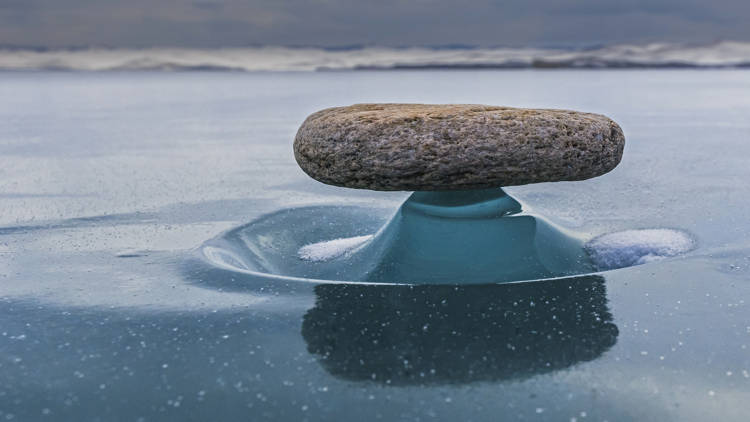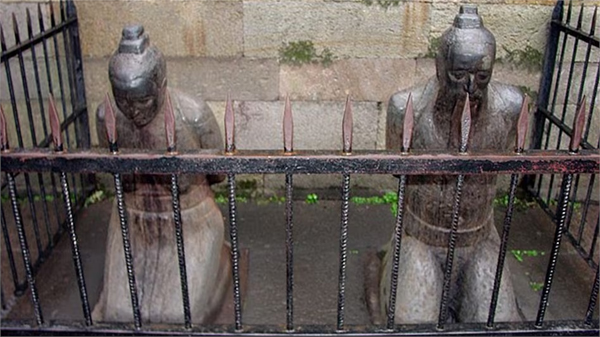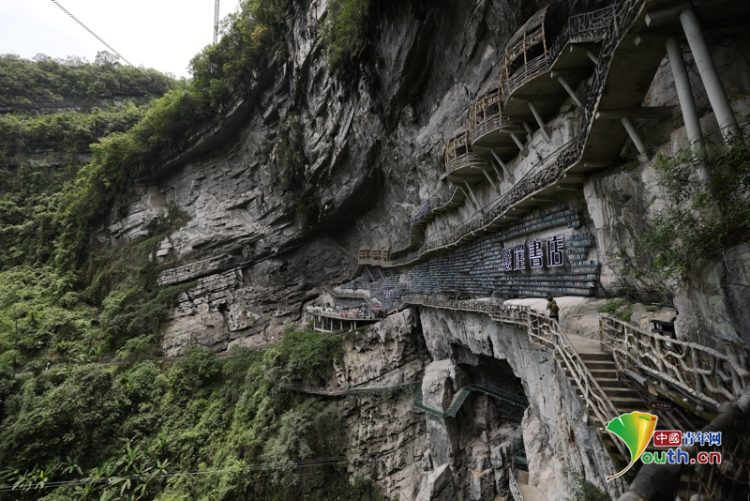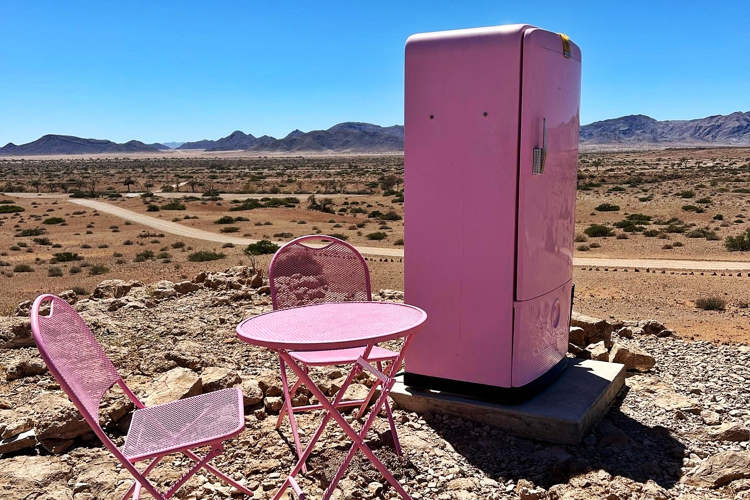In winter, Siberia’s Lake Baikal becomes the scene of a rare natural phenomenon known as “Baikal Zen”. Large stones balance on thin ice “legs” above the surface of the lake, making it seem like they are floating in the air.
Lake Baikal is a fascinating body of water. It’s so large it can easily be mistaken for a sea, it is also the deepest and oldest lake on Earth, as well as the largest freshwater lake by volume. But these are only the most well-known facts about Lake Baikal. There are other more mysterious things going on there, some of which give the place a mystical, almost magical aura. Take the phenomenon known as Baikal Zen, for example – large, Zen-like pebbles balancing precariously on a thin ice pillar, above the frozen surface of the lake. Scientists have been studying this rare phenomenon for years, and we still don’t have a unanimously accepted explanation for it.

Photo © Elena Vtorushina
Photos capturing the Baikal Zen phenomenon started circulating online about four years ago, but people originally dismissed it as the result of digital manipulation. However, it was soon proven that the images were genuine and that such natural works of art can form on the surface of Lake Baikal, during winter, but only when certain conditions are met.
View this post on Instagram
So what is Baikal Zen exactly? Well, it can simply be described as flat, Zen-like stones perched on thin slivers of ice, a few centimeters above the frozen surface of the lake. It’s a stunning sight, to be sure, and one that scientists all over the world have been scratching their heads about for some time. It was actually the subject of a presentation by Team Ukraine at the 2018 International Physics Tournament. If you have 40 minutes to spare, and are curious to hear a scientific explanation of the phenomenon, you can watch the presentation below.
View this post on Instagram
It is believed that Baikal Zen occurs when these flat Zen stones freeze on the surface of the lake, and are then heated by the sun’s rays, to the point where the ice underneath them begins to melt. However, the heat is not the only cause of this phenomenon. If it were, the ice would melt uniformly, and there would be no ice pillar to rest on.
View this post on Instagram
The strong winds that sometimes blow on Lake Baikal also plays a big part in the creation of Baikal Zen formations, as it prevents the melting of the central pillar of ice. So while most of the ice under the rocks melts from the heat, creating a concave surface, the central pillar remains as support. So the winds has to be blowing in order for this amazing phenomenon to occur.
View this post on Instagram
But how do these Zen stones wind up on the surface of the lake to begin with? Well, according to Russian photographer Elena Vtorushina, who took some pics of Baikal Zen formations in 2018, they are blown on to the ice by the strong winds and wind up freezing in place.
View this post on Instagram
It is not clear if the poetically-named Baikal Zen occurs on other bodies of water, if the right weather conditions are met, but there are some who suggest that the clear water of the Siberian lake also influences the phenomenon somehow, as no photos of white ice pillars (water mixed with air) have been published so far.
View this post on Instagram












